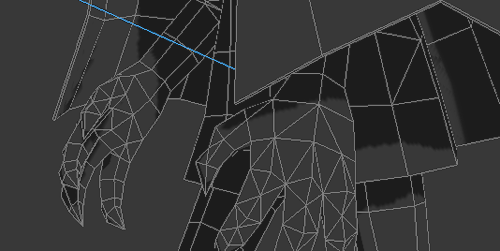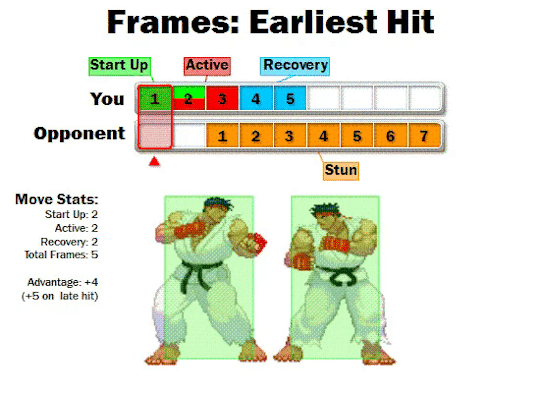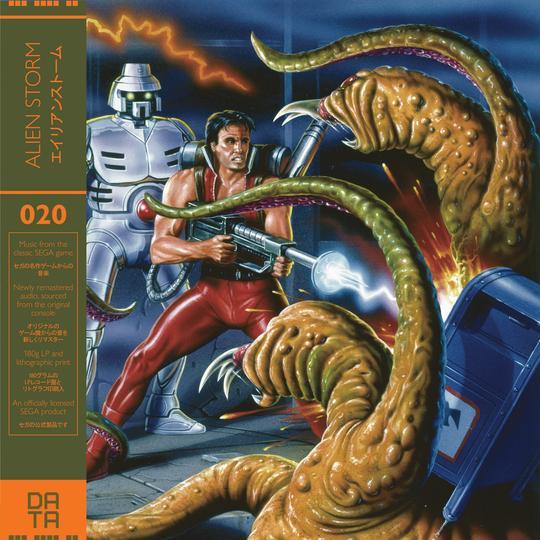#software system design
Explore tagged Tumblr posts
Text
can we start considering online job application systems as class warfare or
#unimportant thoughts#not even joking unfortunately#they really do feel like a tool to oppress the working class#they dont work at all#and im starting to think the companies dont want them to#they built the tools like that on purpose so they can better hide all their unjust hiring practices and habits and decisions#had a old man friend comment to me the other day that it feels like the only way to get hired anymore is to know someone who can get you#an in.#because the job application systems suck so bad and no one ever hears anything back#almost as if….these systems were designed to keep the ‘riffraff’ out automatically….#so they can hire only the people they internally approve of (fellow class members)….while hiding the entire process behind software….#sorry im on my conspiracy mode bullshit#the job market is FUCKED right now and I do think that all hiring software needs to be investigated
23 notes
·
View notes
Text
AUGH
#Robin processes emotions on main#so for my honors project I HAVE to print out copies of my poetry chapbook. and I HAVE to do it with the Official Campus Print System.#and the Official Campus Print System only prints things that are made using PROPRIETARY DESIGN SOFTWARE#that not ONLY would I have to pay multiple tens of dollars a month for#it isn't even compatible with my computer apparently.#WHAT IF I JUST DROPPED OUT OF THE HONORS PROGRAM RIGHT NOW. WHAT THEN. WHAT WOULD THEY DO ABOUT IT#SIIIIIIIIGH#I hate not knowing what I'm doing!!!#I don't usually get angry at anything but this is making me angry because it's so POINTLESS#just let me print my stupid poetry book in PEACE 😭 I'd even bind it myself if I had to!!!#I would actually be seriously considering dropping out of honors right now except for 3 things#1) I do want to finish writing this chapbook. I do want to physically produce it (though I'm frustrated with the requirements for that).#2) I'm working with my favorite professor on this project and I don't want to give up that experience#and 3) if I lost these 2 credits it would mean I'd have to take a whole nother semester of a summer class. and pay for it. yikes.
25 notes
·
View notes
Text

Hospital Management Software from HRsoft Bangladesh
#mobile app design bd#mobile app development bd#accounting software bd#accounting software development bd#advocate dairy management bd#website desing bd#website development bd#omr solution bd#omr development bd#Courier service management software bd#doamin and hosting bd#bulk sms bd#prescription software bd#e-commerce solution bd#online education system bd#spa management software bd#parlor management software bd#ballot counting software bd#dairy farm software bd#shop management software bd#invoice software development bd#salon management software bd#ERP solution bd#vehicle manageent bd#Coaching Management Software bd#hrsoftbd
2 notes
·
View notes
Text
weekly reminder to update your software
i get it - it's annoying, it takes time and maybe there are changes (be it design or functionality... looking at you, discord) to the software you don't like. i get it. hell, these are things that annoy me too.
BUT it's also a security thing. old software and operating systems (windows or ios for example) is a safety risk. especially when you have it linked to accounts with your personal or financial information. cybercrime is no joke!! and your PC, laptop, smartphone or tablet can be virus-infected without you even noticing.
how can i be safe? i hear you asking. well, built-in security in operating systems is oftentimes enough - you don't need bloatware like avast or mcaffee or whatever they're called. they use unnecessary resources and can make older hardware slow.
but - and here is the catch - these built-in security measures (and even 3rd party software) are only safe when they're also kept UP TO DATE. windows defender needs to be updated with windows updates. so do them now, if you have been putting them up.
#ugh sorry. needed to get this out of my system#bc i talked to a friend a few days ago and they said their partner hates to update a software bc the developers changed the design and i -#- wanted to pull my own eyes out#i'm a IT specialist in training and i work at a place with high secruity levels#you have no idea how hard and labour intensive it is to keep data safe these days#it's ridiculous#addi.txt
5 notes
·
View notes
Text

Courier Service Management Software by @hrsoftbd Bangladesh
#mobile app design bd#mobile app development bd#accounting software bd#accounting software development bd#advocate dairy management bd#website desing bd#website development bd#omr solution bd#omr development bd#Courier service management software bd#doamin and hosting bd#bulk sms bd#prescription software bd#e-commerce solution bd#online education system bd#spa management software bd#parlor management software bd#ballot counting software bd#dairy farm software bd#shop management software bd#invoice software development bd#salon management software bd#ERP solution bd#vehicle manageent bd#Coaching Management Software bd#hrsoftbd
3 notes
·
View notes
Text
the head of secondary at my school (i THINK that's what he is??) was walking into the school as i was walking out and he decided to start small talk with me???
"how have exams been going?"
"...they've been alright"
"alright?" *makes so-so hand motion*
"yeah"
"have any more left?"
"classics"
"so next week? well good luck!"
"thanks—..."
this post isn't supposed to mean anything i'm just a bit confused lmao
#in other news my computing exam went just about as well as i thought it would#databases was pretty easy besides one question that was worded in a way i couldn't really understand#software dev/computer systems? not so much.#i spent like. 30 minutes (maybe more) trying to figure out an answer that would work for question 6c but NOTHING STUCK#tried every sort of design method i could think of. yes even pseudocode (which i hate).#in the end i just gave up. so the page for 6c is just. a mess of scribbles and misery#also my classics exam has been postponed to wednesday. oh goodie! /s#misia has a stupid thought#ignoreable post
2 notes
·
View notes
Note
I feel like in post launch support I see numerical balance changes (eg. X has 10% higher stun, 8% less hp) much, much more frequently than animation balance changes (eg.move now has wider reach, faster startup). I understand animations take more work than tweaking a database, but given that many games will never get a single re-animation it seems like there must be more to it than that.
There is more to it than that. When we build game systems, one common method of differentiating the work is "things we probably will change" (e.g. things we plan to tune based on feedback) and "things we probably won't change" (e.g. the way a story character or environment looks). We build the things we expect to change such that it is easy to make those changes. The things that we don't expect to change are typically not built with changes in mind, because we assume we will lock them in and they'll be completely finished.

As you might expect, numerical balance values like 10% higher stun duration, 8% less HP, or an extra 5% critical hit rate are often built to be easy to change because we expect to have a lot of things in the game that can change them. A magic blessing spell, a potion that provides a temporary boost, a passive racial ability, or a piece of gear all might provide different modifiers to a character's health total and we're probably going to want to tune most of those to make them feel right for their power level and the player experience. Since we expect designers to modify these values a lot, the engineers build the system to make it easy to set and modify those values.

Animations are typically not built to be easy to modify because we don't need to do it all that often. Most of the time, the character performs the animation and we call it good. We might tweak and modify it leading up to launch, but they are generally locked in once we finalize them. Most games do not need to tune a particular animation beyond being able to scale the animation playback speed to fit within a certain number of frames. Tuning would generally require the animator to make a small change, the designer to play with it and decide if it is good enough, and then make changes if it isn't good enough. This cycle can take a significant amount of time, and we often have [huge numbers of animations] we need to complete. This kind of iteration often takes too long to do feasibly.

There are exceptions to this, of course. Fighting games, for example, tend to make animation changes regularly because of the way they are built. In addition to damage and health, fighting game strength are all about the character animation start-up, the active duration, and recovery period. A particular move can be buffed by shortening its recovery time or nerfed by increasing a move's startup duration. Because the designers need to make changes to these animations regularly, the engineers build the animation system to be tunable so that the designer doesn't need to keep calling on the animators, and the animators can instead focus their time on creating new animation suites for new characters.
[Join us on Discord] and/or [Support us on Patreon]
Got a burning question you want answered?
Short questions: Ask a Game Dev on Twitter
Long questions: Ask a Game Dev on Tumblr
Frequent Questions: The FAQ
34 notes
·
View notes
Text

HRsoftBD offer Bluk SMS
#mobile app design bd#mobile app development bd#accounting software bd#accounting software development bd#advocate dairy management bd#website desing bd#website development bd#omr solution bd#omr development bd#Courier service management software bd#doamin and hosting bd#bulk sms bd#prescription software bd#e-commerce solution bd#online education system bd#spa management software bd#parlor management software bd#ballot counting software bd#dairy farm software bd#shop management software bd#invoice software development bd#salon management software bd#ERP solution bd#vehicle manageent bd#hrsoftbd
2 notes
·
View notes
Text
appleiphone
#Apple’s latest iPhone release has once again created a buzz in the tech world. Known for its innovation and premium quality#Apple has introduced several new features and enhancements in this iPhone series. From design upgrades to advanced performance capabilities#the new iPhhttps://pricewhiz.pk/one is making headlines. Let's dive into what makes this new iPhone stand out.#Design and Display:#The design of the new iPhone continues Apple’s legacy of combining elegance with durability. The latest model features a sleek glass and me#giving it a premium look and feel. The Super Retina XDR OLED display offers stunning visuals with improved brightness and contrast#ensuring a vibrant and immersive experience. Available in different sizes#the new iPhone caters to various user preferences#whether you prefer a compact phone or a larger display.#Processor and Performance:#At the heart of the new iPhone is the A16 Bionic chipset#Apple’s most powerful chip to date. This 6-core CPU and 5-core GPU deliver lightning-fast performance#making multitasking#gaming#and content creation smoother than ever. With its advanced machine learning capabilities#the iPhone adapts to your usage patterns#optimizing performance and enhancing overall efficiency.#Camera System:#Apple has always excelled in mobile photography#and the new iPhone takes it a step further. The upgraded 48-megapixel primary camera captures stunningly detailed photos#even in challenging lighting conditions. Low-light photography has seen significant improvements#allowing users to take clearer#sharper images at night. The iPhone also offers advanced video capabilities#including Cinematic Mode and Pro-level editing tools#making it ideal for both amateur and professional content creators.#Battery Life and Charging:#Battery life has always been a crucial factor for iPhone users#and Apple has made improvements in this area as well. The new iPhone promises all-day battery life#ensuring that you stay connected and productive without constantly worrying about recharging. Fast charging and wireless charging options m#Software and Security:
2 notes
·
View notes
Text
SPARK TECHNOLOGIES
We deliver value by identifying opportunities that align with business objectives and adopting an agile approach to implement them.
#Web developement#Software testing#Devops & Engineering#Salesforce#Mobile Application Developmen#Data Analytics#IT Consulting#IT Outsourcing#Web Design#Content Management System#Digital Marketing
2 notes
·
View notes
Text
SPARK TECHNOLOGIES
We will strive to surpass our clients’ expectations by providing innovative solutions that are grounded in science and experience, developed by recognized experts, and delivered in a trusted manner above reproach. We will remain steadfastly focused on our clients’ goals and work every day to ensure that the issues of current importance, which they are charged with solving, are moved closer to a proven and cost-effective resolution.
#web developement#software testing#devas & Engineering#salesforce#mobile app development#data analytics#it consulting#it outsourcing#web design#content management system#digital marketing
2 notes
·
View notes
Text

#Alien Storm#Sega#Tiertex Design Studios#Sega AM1#Beat 'em up#Shoot 'em up#Sega Mega Drive#Genesis#Mega Drive#Sega Master System#Master System#U.S. Gold#Tectoy#Erbe Software#1990
5 notes
·
View notes
Text
VBR v0.8
The new VBR version v0.8 is finished and ready for download for all members.

Members of all level can download the software for free.
Version Log v0.8:
Completely new, intuitive inventory system with Drag&Drop operation
Copy function: Objects can now be copied directly in the room with shortkey "i"
Locking and phantoming an object and the status display is now integrated in the middle mouse button menu
The base ground size can now be set in the options menu
Game objects can now be randomly removed from locked bags and card decks with a single mouse click.
The high-resolution movement of objects via the number pad now also has movement via the Y axis with the "9" and "3" buttons
Fixed many major bugs and minor errors.
Virtual Board Game Room on Patreon
#board games#virtual board game#board game design#board game maker#indie games#simulation#tabletop games#tabletop gaming#virtual board game room#tabletop game creator#board game#game design#digital board game tool#board game tool#sandbox system#software development
4 notes
·
View notes
Text

Accounting Software Development from @hrsoftbd Bangladesh
#mobile app design bd#mobile app development bd#accounting software bd#accounting software development bd#advocate dairy management bd#website desing bd#website development bd#omr solution bd#omr development bd#Courier service management software bd#doamin and hosting bd#bulk sms bd#prescription software bd#e-commerce solution bd#online education system bd#spa management software bd#parlor management software bd#ballot counting software bd#dairy farm software bd#shop management software bd#invoice software development bd#salon management software bd#ERP solution bd#vehicle manageent bd#Coaching Management Software bd#hrsoftbd
2 notes
·
View notes
Text
Process "File" Descriptors (PID FD)
Linux in recent years has fixed some of the biggest annoyances I had with the UNIX model, and I'm feeling rather happy about this. One example of this is with how you can refer to processes.
With traditional UNIX APIs, you can never signal a process without a PID reuse race condition. The problem is somewhat inherent to the model: a PID is just an integer reference to a kernel-level Thing, but crucially, that Thing is not being passed around between processes. If I tell you the PID 42, that's not qualitatively different from you randomly picking the number 42 - either way, you can try to signal whichever process currently has PID 42. You might not have permissions to signal the current resident of that PID for other reasons, but you don't need a prior relationship to signal it - you don't need to receive any capability object from anyone. I haven't given you something tied to any process, I just gave you a number, and in the traditional UNIX model there's nothing better (more intrinsically tied to a single process) to pass around.
Compare file descriptors. An FD is also "just" an integer, but having that integer is worthless unless you also have the kernel-level Thing shared with your process. Even if I give you the number 2, you can't write to my stderr - I have to share my stderr, for example by inheritance or by passing it through a UNIX domain socket.
This difference is subtle but technically crucial for eliminating race conditions: since an FD has to be shared from one process to another through the kernel, and the underlying "file" descriptor/description is managed and owned by the kernel, when you later use the FD in a system call, the kernel can always know a fully unambiguous identity of which Thing you were referring to. If you just told it 42 in some global ID space, well do you mean the thing currently at index 42? Or did you really think you were referring to a thing which existed some time ago at index 42? That information has been lost, or at least isn't being conveyed. But if you told it 42 in your file descriptor table, now that can hold more information, so it can remember precisely which thing your 42 was referring to when you last received or changed it.
So how did Linux fix this?
We now have "PID FDs", which are magic FDs referring to processes. Processes "as a file", in a more true and complete way than the older procfs stuff.
Unlike PIDs, which by design can only travel around like raw numbers divorced from the true identity information they gesture at, a PID FD can never lose track of the process it refers to: if that process dies, its PID FD will forever "know" that its dead even if the PID is reused (because when that process yields to or is preempted by the kernel for the last time, the kernel remembers that there's a PID FD for it which needs to be updated, and even if the kernel recycles the PID it knows not to update that PID FD to point to the new process).
And we now have a system calls which let us
create a new process (or thread!) and have that return a PID FD instead of a PID (or "TID" in the case of threads, but in the Linux kernel those are basically the same thing)
signal a PID FD instead of the traditional PID (or TID), and
wait on a PID FD (in fact, the FDs just plug into the normal poll, select, or epoll system calls, so waiting on process or thread status can just hook into all existing event loops).
The one crucial thing is that we must not forget that these guarantees only start once we've gotten the PID FD: in particular, if you get a PID FD from a PID instead of getting the PID FD directly, you still need to check once if the PID hasn't gotten invalidated between when you got the PID and when you got the PID FD. This is something you can only do as the direct parent or (sub)reaper of the PID in question, because then you can use the traditional "wait" system call on the PID after getting the PID FD - if getting the PID FD succeeded but then the wait reports that the PID exited, that means you could've gotten a PID reuse by the time you got the PID FD from the PID.
So ideally, we just don't deal in PIDs at all anymore. When we create a process, we can get its PID FD atomically with the creation. (If we can't do that, if we're creating the process and then getting the PID FD with a separate system call, we do the wait check described in the last paragraph after getting the PID.) Then we pass the PID FD around - this might superficially look like passing an integer around, for example if you need to use the FD number in a shell redirection or communicate it to a child process, but underneath that the actual FD would be getting passed around either by inheritance, UNIX domain sockets, or whatever other means are available.
I've been wanting this for years. I've spent a lot of mental cycles trying to figure out the most elegantly minimal and composable primitives which could work around various problems in service supervision and automatic restarts in the face of random processes dying or getting killed. Those edge cases are now much more simple to totally cover by using the PID FD stuff, at least so long as we're willing to lose compatibility with the BSDs and other Unix-y systems until they catch up. Which, honestly, is an increasingly appealing proposition as Linux has been adding good stuff like this lately.
P.S. On that note, another thing we now have, is the ability to reach into a process (if we have its PID FD and have the same relationship to it (or elevated privileges) that we'd need to hook into it with debugger system calls) and copy a file descriptor out of it. This means we no longer need a child process to have been coded to share it with us through a domain socket or by forking or exec-chaining into a process we specify. Accessing file descriptors in already-running processes enables some neat monkey-patching and composition, and it's simpler to implement than the UNIX domain socket trick. I remember being frustrated about 7 years ago by the lack of ability to do exactly this - reach down into a child process (for example into a shell script, which has no built-in ability to access the "ancillary data" of a socket) and pluck a file descriptor out of it.
6 notes
·
View notes
Text

Mobile App Development by @hrsoftbd Bangladesh
#mobile app design bd#mobile app development bd#accounting software bd#accounting software development bd#advocate dairy management bd#website desing bd#website development bd#omr solution bd#omr development bd#Courier service management software bd#doamin and hosting bd#bulk sms bd#prescription software bd#e-commerce solution bd#online education system bd#spa management software bd#parlor management software bd#ballot counting software bd#dairy farm software bd#shop management software bd#invoice software development bd#salon management software bd#ERP solution bd#vehicle manageent bd#Coaching Management Software bd#hrsoftbd
3 notes
·
View notes